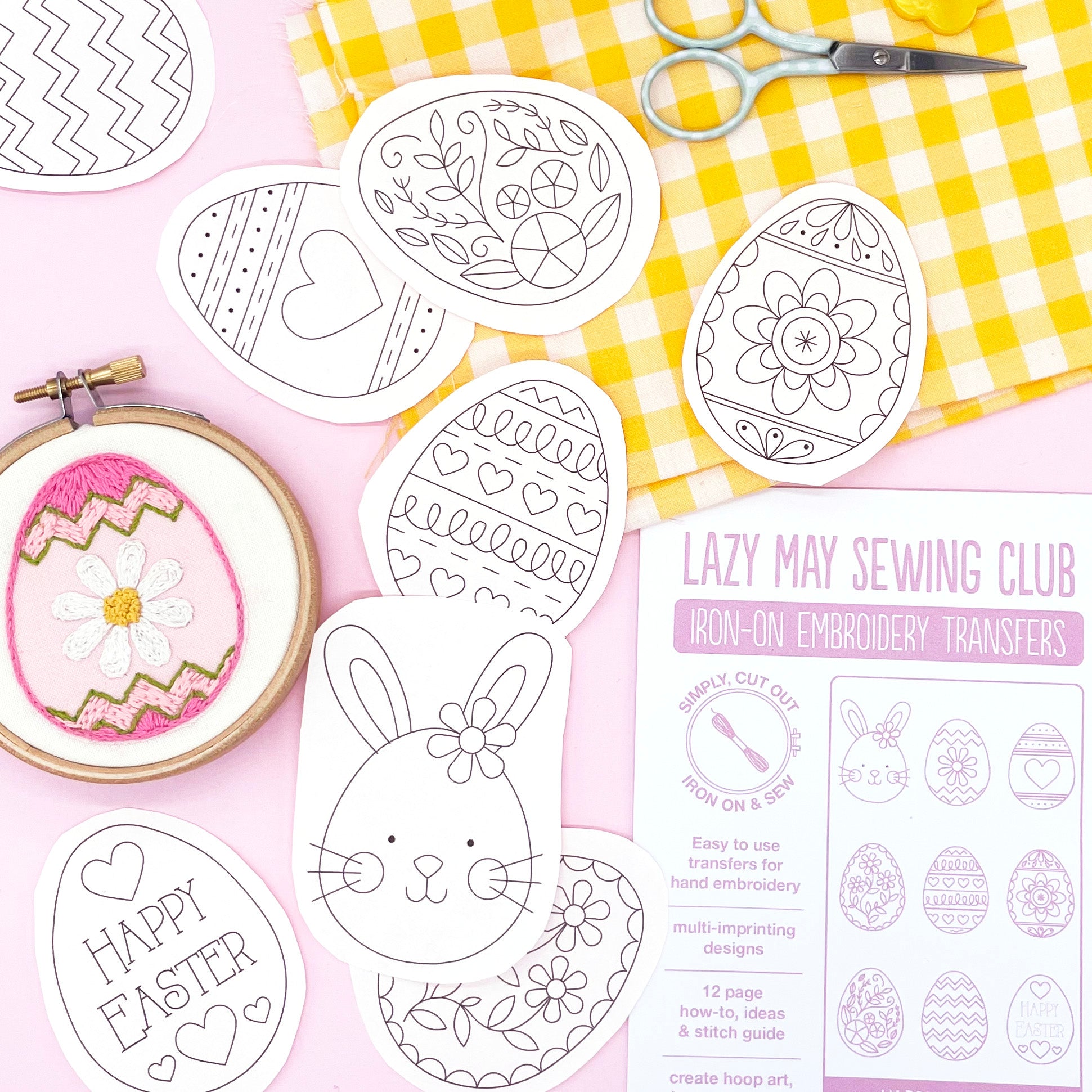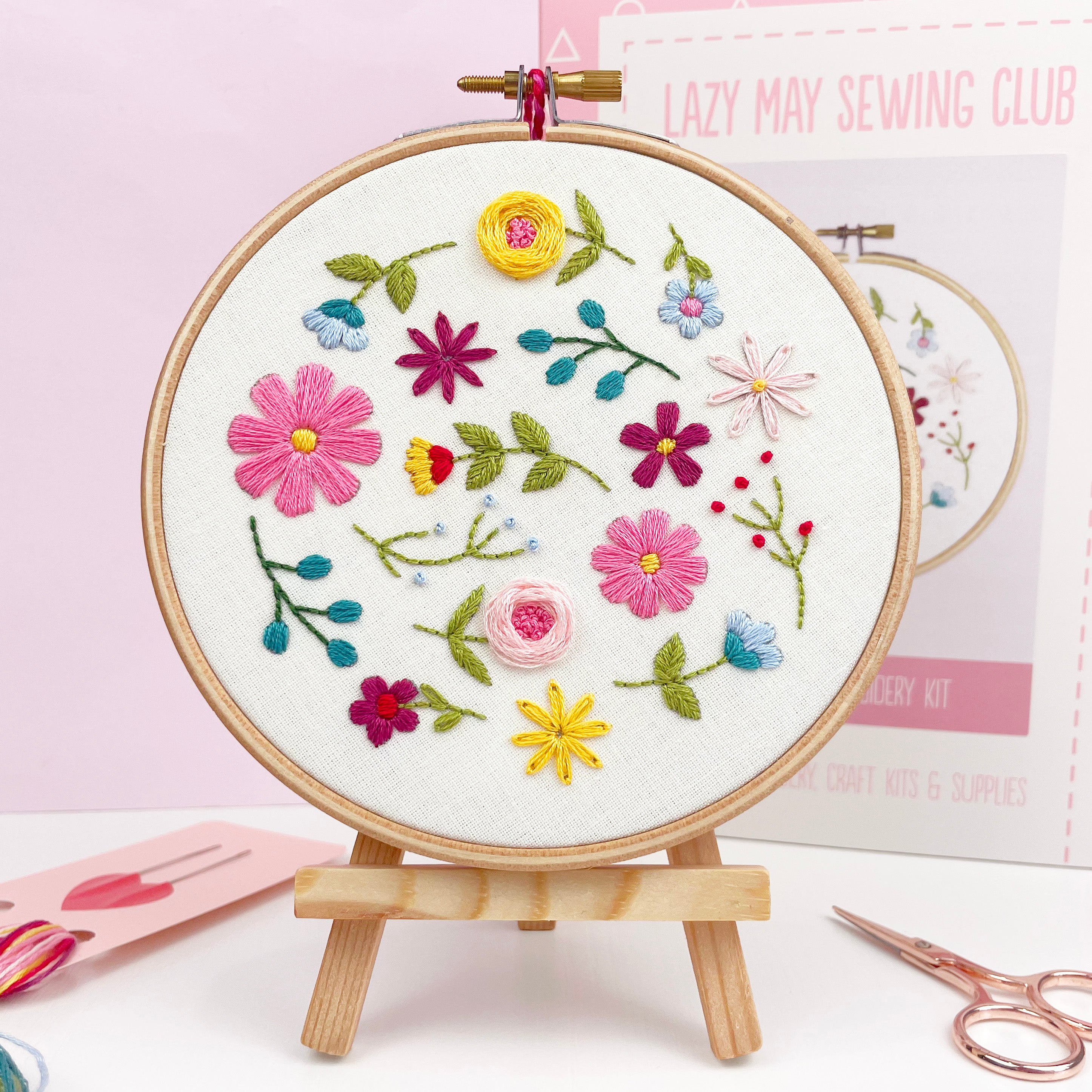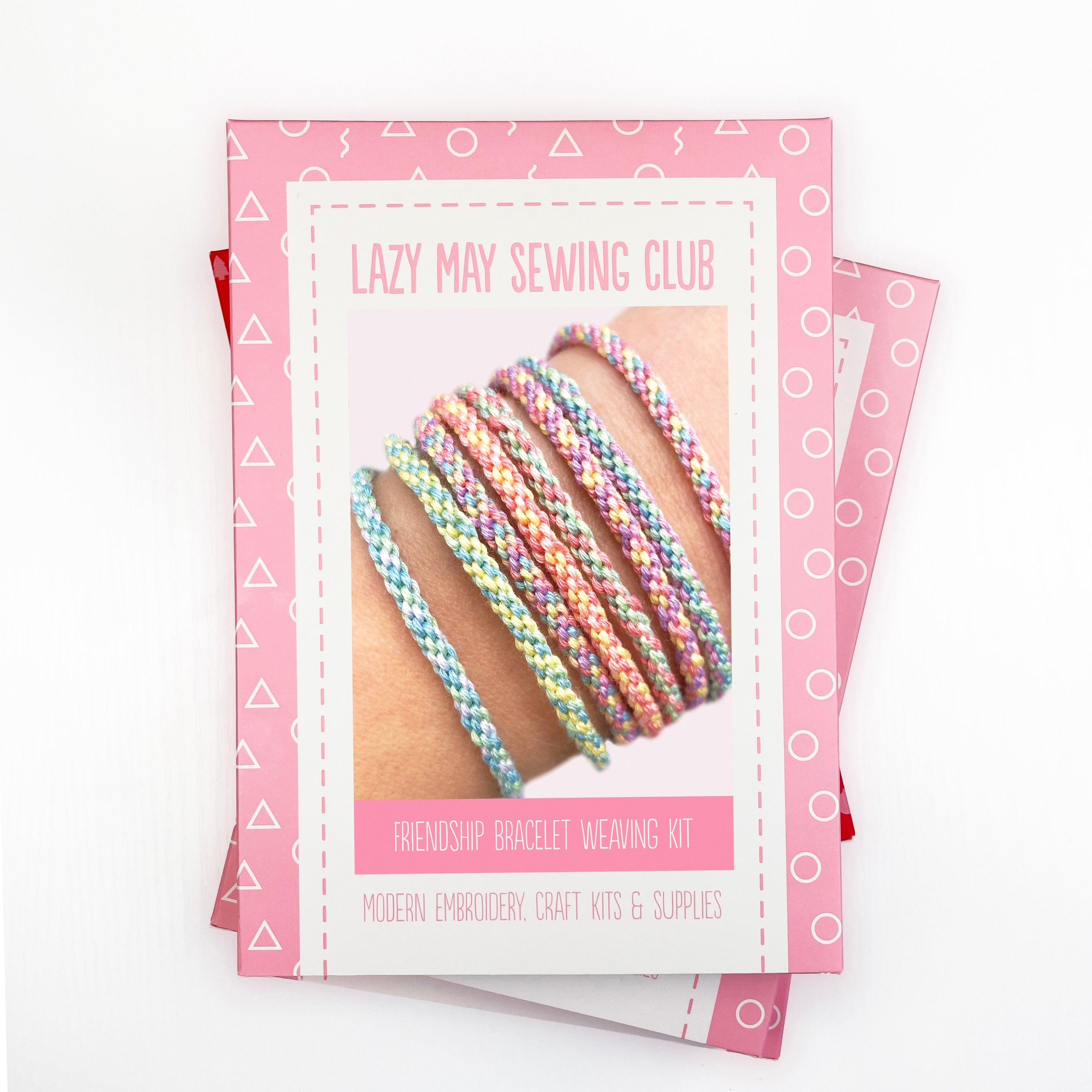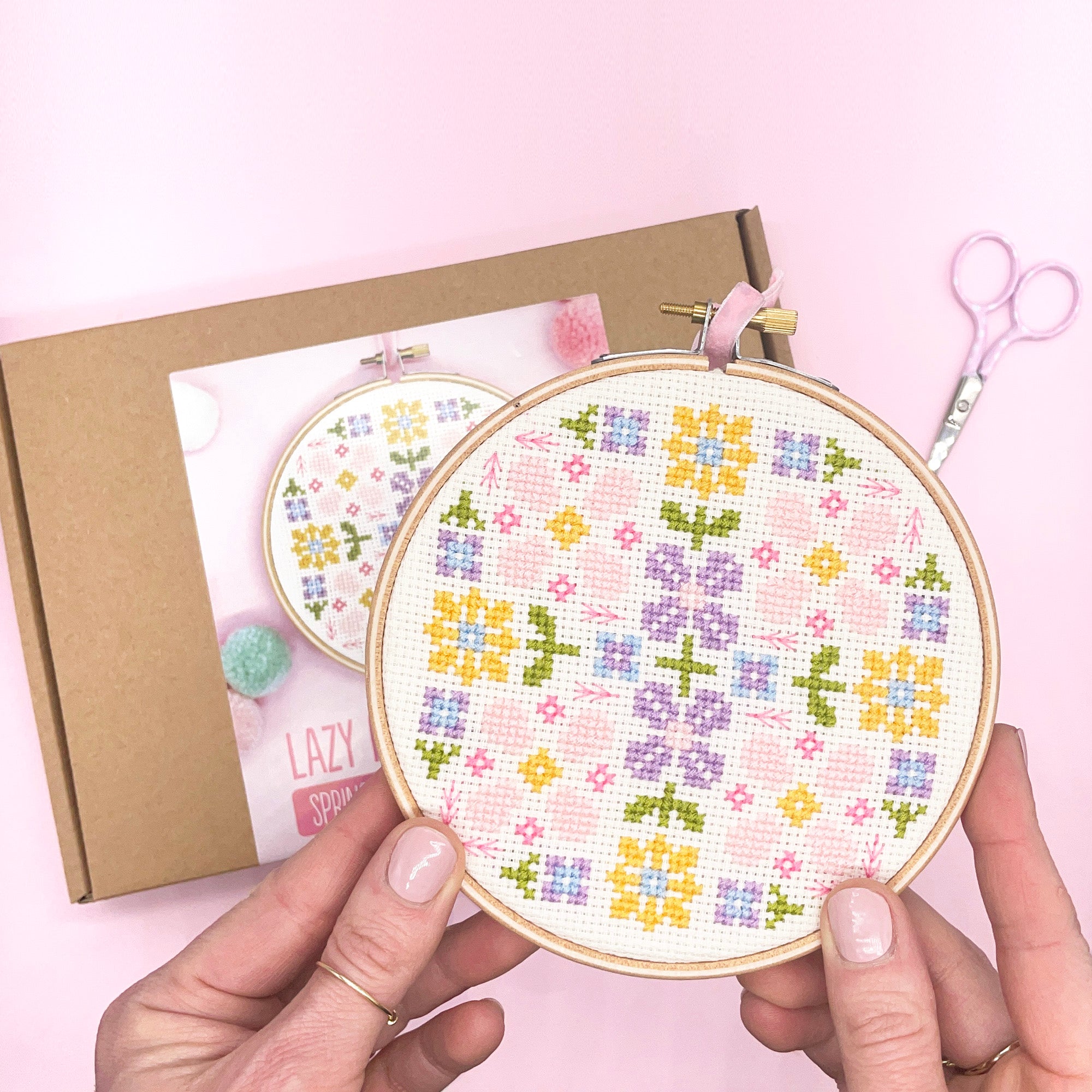Embroidery Made Easy: Needle Sizes, Threading Tips, and Tangle-Free Stitching
Embroidery is such a lovely, relaxing craft—but a few little tweaks to your tools and habits can make a big difference to how smooth and enjoyable it feels. This guide is packed with practical tips to help you get started, avoid tangles, and enjoy your stitching.
Whether you’re new to embroidery or just want to avoid those annoying knots, read on to discover how to choose the right needle, measure and cut thread, use a threader, and keep everything neat and tidy.
Jump to:
- Understanding Embroidery Needle Sizes
- How to Unwind a Skein of Embroidery Thread
- Measuring and Cutting Embroidery Thread
- Simple Tips for Threading a Needle
- How to Use a Needle Threader
- Avoiding Tangles While You Stitch
- Using Bobbins to Store Thread
- Using Embroidery Thread Wax
- Quick Summary
Understanding Embroidery Needle Sizes
Choosing the right embroidery needle can make all the difference to your stitching experience. Whether you're a beginner or have been stitching for years, getting to know your needle sizes and threading tricks can help make your embroidery projects smoother and more enjoyable.
Embroidery needles, sometimes called crewel needles, have a larger eye than regular sewing needles, making them perfect for threading multiple strands of embroidery thread. It's important to choose the right size needle for the number of strands you're using. Here's a handy guide:
| Needle Size | Number of Strands |
|---|---|
| 3 | 5 or 6 |
| 4 or 5 | 4 or 5 |
| 7 | 3 |
| 8 | 2 or 3 |
| 10 | 1 or 2 |
Choosing the right match between needle size and thread strands ensures smoother stitching and less frustration!

How to Unwind a Skein of Embroidery Thread (Without the Knots!)
Trouble with knots and tangles can start before you even thread your needle. To give yourself the best start, it’s worth taking a moment to unwind your thread skein properly, it only takes a few seconds and makes a big difference. A skein is the name for a looped bundle of embroidery thread, neatly folded and held together with paper bands.
Here's the method I always use:
- Slide the two paper bands so they meet in the middle of the thread.
- Hold them gently between your thumb and finger to keep the thread skein steady.
- Look for the end that has the barcode label and find the end of the thread.
- Gently pull the strand from the barcode end. It should come out smoothly without bunching or knotting. Pull until you have enough then cut with sharp scissors.
Measuring and Cutting Embroidery Thread
Keeping your thread to a manageable length helps prevent tangling while you work. A good guide is to use a piece roughly from your fingertips to your elbow—about 40cm (16"). Keeping it short and neat really does make stitching easier and smoother.
Simple Tips for Threading a Needle
Threading a needle can sometimes feel fiddly, but a few simple tricks can make it much easier:
- Cut the end of your thread diagonally with sharp scissors to create a fine point.
- Flatten the end of the thread between your thumb and finger before pushing it through the needle's eye.
If you still find threading tricky, a needle threader can be a game-changer!
Looking for beginner-friendly embroidery kits?
Discover our full range of easy-to-use kits, designed to help you fall in love with stitching!
Explore KitsHow to Use a Needle Threader
Needle threaders are inexpensive little tools that can make a huge difference. Here's how to use one:
- Insert the wire loop of the needle threader through the eye of your needle.
- Pass the end of your thread through the wire loop. Make sure all strands are inside the loop.
- Gently pull the threader back through the needle's eye. The thread will follow through effortlessly.
- Once the thread is through, remove the needle threader from the thread.


Avoiding Tangles While You Stitch
In embroidery, dealing with knots is inevitable. To minimise tangles, let your needle and thread dangle loosely every few minutes to get rid of any twisting that may cause knots. Keeping your thread relatively short also helps—a length from your fingertips to your elbow is ideal.
Using Bobbins to Store Thread
Using bobbins to store your embroidery thread prevents tangling and keeps your threads neatly organised. Simply wind the thread onto the bobbin, and keep them in your sewing box for easy access.
Using Embroidery Thread Wax
Thread wax—also called thread conditioner or thread gloss—is a bit of a secret weapon for embroidery lovers. It coats your thread with a gentle layer of wax that helps it glide smoothly through fabric, reducing tangles and making threading easier too. As well as fewer tangles and smoother stitching, it can also help with threading, especially when you're working with multiple strands. Ours has an uplifting summer scent and is made from a clear organic wax that won’t discolour your threads.
How to Use
- Lay your thread across the top surface of the wax.
- Place your thumb gently over the thread to hold it in place.
- With your other hand, pull the full length of the thread across the wax.
- Repeat this once or twice so the thread is lightly coated.
- Run the thread through your fingers a couple of times to smooth it out and remove any excess wax.
You can browse our collection of thread conditioners and waxes here – they're a lovely treat for your stitching toolkit!

Quick Summary
- Choose the right needle size for your thread strands.
- Unwind your skein properly to avoid knots from the start.
- Cut thread to a manageable length—around 40cm is ideal.
- Use sharp scissors and threaders to make threading easier.
- Let your thread dangle to untwist as you stitch.
- Store threads on bobbins to keep things tidy.
- Try thread wax for smoother stitching and fewer tangles.





